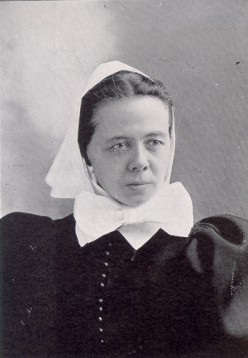| The
quest for freedom and equality for women in all aspects of society,
including religion. |
 |
|
Sister
Pernille Pedersen (1858-1898), deaconess and missionary to Madagascar.
Long before women's ordination, women created paths of leadership
and service
|
The women's movement
has early roots in nineteenth-century
evangelicalism. Social constraints against women speaking in public
were obstacles to women's participation in abolitionism
or revivals. These and other limitations pointed up the need for "female
emancipation," addressed by the Seneca Falls Convention of 1848. Women's
suffrage, or the right to vote, became a focal point for the women's movement
for several decades. In 1920 the 19th Amendment gave women the right to
vote. Women entered the labor force in great numbers during World War
II. In 1963 Betty Friedan published The Feminine Mystique, challenging
the ideal of the domestic woman and inaugurating the feminist movement;
this soon diverged into several schools of thought, including liberation
theology. Women preachers and missionaries have been active in some evangelical
circles since the 1800s, but not until the mid to late twentieth century
did most mainline denominations ordain women. By the close of the twentieth
century about 10 percent of Protestant clergy in the U.S. were women,
up from 1 percent in 1900. Many more women exercise leadership as voting
members of congregations, Christian educators, musicians, and congregational
presidents.
|